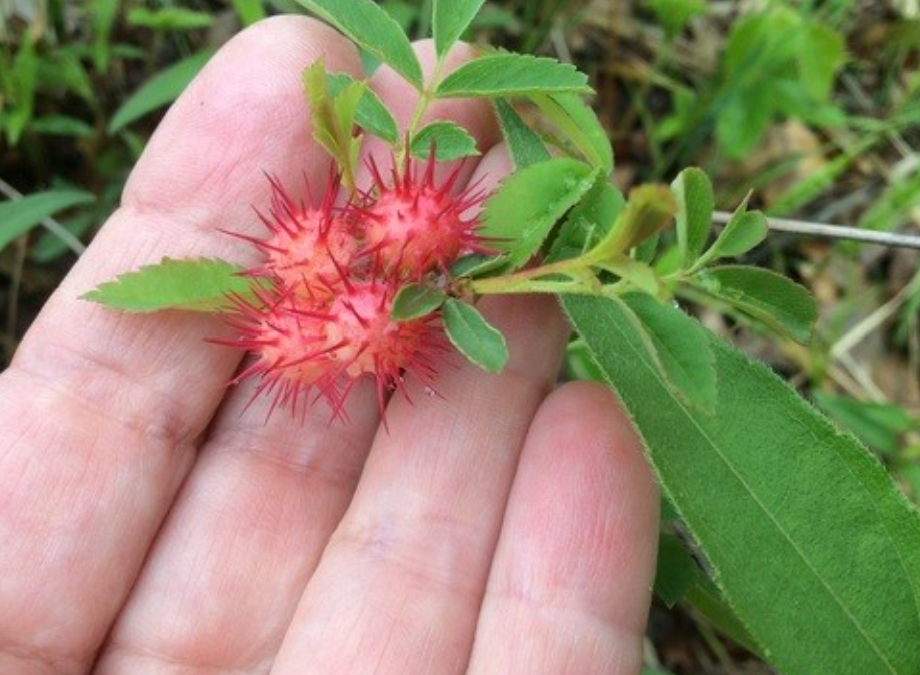Admittedly, I am not much of a scary movie buff, but whenever I do buckle in for a scare, I am struck by how many scary movie tropes are reminiscent of real-life happenings in the insect world. One spooky concept often explored in the horror genre is ‘mysterious and malicious growths.’ Mysterious growths are the bread and butter of insects in the family Cynipidae: gall wasps. These often-tiny wasps lay their eggs inside of the tissues of plants. Their larvae secrete a specific cocktail of chemicals which forces the plant to develop so-called galls. These are protrusions on the bark or leaves of a plant, using the tissues of the plant, as directed by the insect. The larvae use these galls as both shelter and food until they are ready to emerge and continue their lifecycle. Each species of wasp forms its own distinct gall-no matter what plant it develops on! My favorite is the spiny leaf gall wasp (Diplolepis polita), because their galls are so striking. While I have never seen one of these wasps in action, I have certainly admired their handywork- bulbous, green to pinky blobs with fabulous red spikes- which, especially when observed on rose bushes, camouflage perfectly. This gall formation is horrifying if you put yourself in the place of the plant, but there is no evidence that native gall forming insects have an overly detrimental effect on the plant.
The truly horrifying part happens to the wasps themselves: only around 10% survive from larva to adult form, because they are prey to wasps in the Chalcid family which specialize in parasitizing other wasps. Take the Crypt keeper wasp which lays its eggs inside of the Crypt wasps’ gall. Somehow, in some mystery of manipulation, in the presence of the keeper parasitoid, the Crypt wasps chew too small a hole in the side of their gall. They then get their heads stuck and die. Finally, Crypt keeper is then safe to mature while eating the Crypt wasp. When ready to emerge, it has no need to chew a hole through the woody gall, it just eats the head of its “host” wasp and escapes through the perfectly sized hole. How diabolical is that?!
These parasitic chalcid wasps are likely the reason for the wild shapes and defenses built into different galls. For example, the spines found on the gall of the spiny leaf gall wasp. Some gall wasps form complicated maze-like galls which confuse their would-be parasitoids. Another fascinating gall can be found on some rose species: the ‘moss’ or ‘rose bedeguar gall.’ This gall is large and looks like a large pile of windblown moss. (It is so striking that it was mythologized in English Folklore, from which some believe Shakespeare drew inspiration for his character Puck.) The horror doesn’t stop there, after killing and eating their hosts, Chalcid wasps are subject to parasites of their own! The occurrence is so common, scientists made a word for it: hyperparasitism. Hyperparasitoids are a whole different category of insect that make their living by being parasites to other parasites!
While we humans love to sensationalize the wild happenings in the animal kingdom, the plants and insects involved in these systems are not evil, and their horrifying acts have reason. In the case of the gall wasps, this whole system is built to exploit the niches of opportunity and means that no one organism can take over the world; which in my mind would be the real horror.
By SHADOW Education Programs Lead, Cecilia Black


Recent Comments